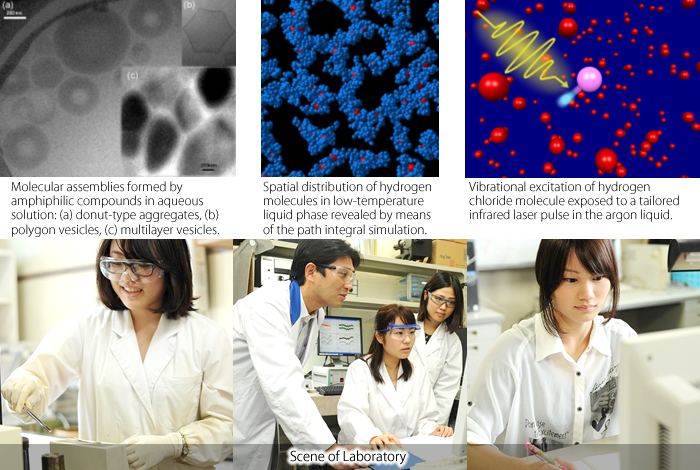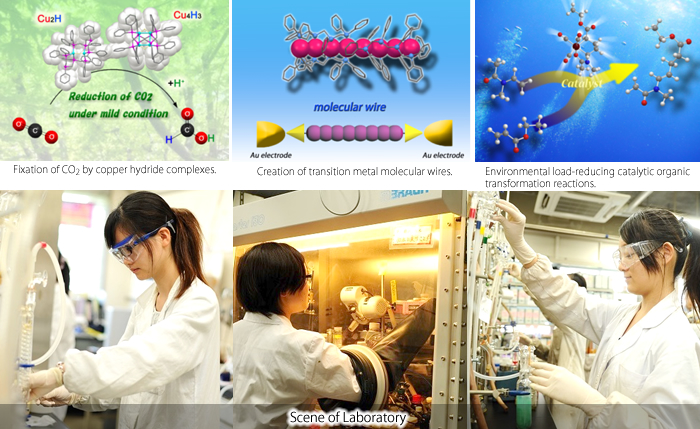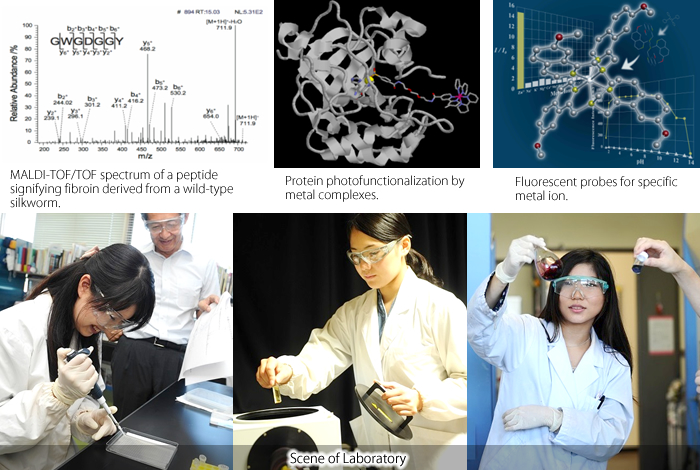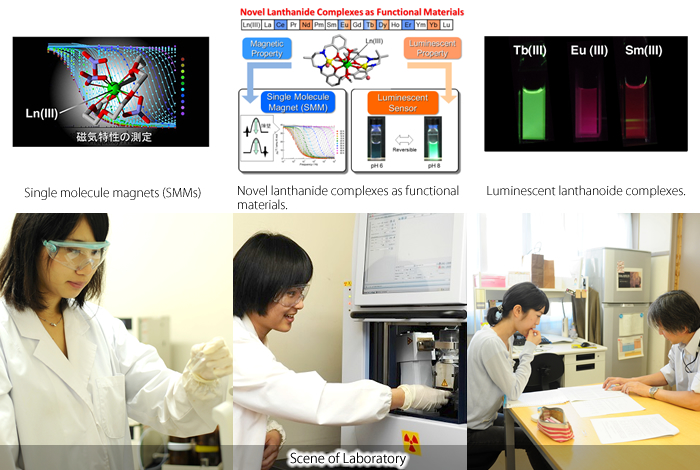Department of Chemistry, Biology, and Environmental Science
Chemistry Course
Chemistry HP / Relevant pages → Master's Program in Chemistry at the Graduate School
Features of Education and Research Fields in the Chemistry Course
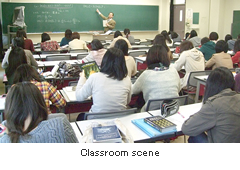
The education and research fields in the Chemistry Course consist of four major fields in modern chemistry: physical chemistry of condensed matter, chemistry for molecular design, functional chemistry in life science, and functional chemistry for materials. The Chemistry Course provides a fully comprehensive curriculum involving four fields in modern chemistry, from which the students can take the classes for four years. Each senior belongs to a research laboratory in our chemistry course to engage in the graduation research for a whole year, with receiving detailed instruction from the faculty staffs in the laboratory. Each research laboratory is equipped with the necessary experimental apparatuses: the X-ray diffractometer, nuclear magnetic resonance (NMR) spectrometers, and mass spectrometers.
Features of the Curriculum in the Chemistry Course
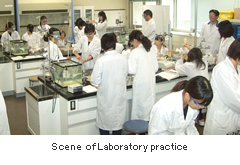
Freshmen may join the introductory classes of basic chemistry, physics, and mathematics. Sophomores and juniors may take the classes of chemistry at the universal standard. They involve a series of lectures, practices, and experiments in physical, inorganic, and organic chemistry. Seniors may carry out their graduation research in the laboratories, receiving instructions and advices regarding their research themes from the faculty staffs, to attempt to discover unknown phenomenon or an answer to unsolved problem. After the graduation, most of students take the graduate school program of chemistry (two-year master course) to continue their researches.
Education and Research Fields
Division of physical chemistry of condensed matter
Investigations of physicochemical properties of molecular assemblies
In the experiment field of division of physical chemistry of condensed matter, we investigate the physicochemical properties of the soft matter such as surfactants, amphiphilic polymers, ionic liquids, liquid crystals, and metal nanoparticles. We also investigate the nano-structures of the molecular aggregates by the measurements of small-angle X-ray or neutron scattering, EXAFS, light scattering, and transmission electron microscopy. In the field of theoretical physical chemistry, we investigate the motion of electrons and molecules in materials, which cannot be understood by experiments. As the theoretical tools, we make full use of the latest physical computational approaches such as molecular dynamics method, path integral method, and quantum wavepacket method in order to solve equations of motion based on classical and quantum mechanics. In particular, we focus on the studies of liquid helium and hydrogen at low temperatures and vibrational excitations of molecules exposed to tailored laser pulse irradiation.
Division of chemistry for molecular design
Creation of innovative functional molecules toward sustainable society
We investigate the creation of innovative functional molecules by fabricating various metals and organic molecules as metal complexes, aiming for the realization of sustainable human society in accordance with precious nature. For example, catalysts for CO2 fixation which serve as a basis for artificial photosynthesis, synthetic organic catalysts for environmentally load-reducing reactions which can selectively synthesize desirable compounds under mild conditions and without harmful wastes, and nano-sized molecular devices with an aim of resource and energy saving future system, are currently under investigation. We are challenging to establish sustainable future by using metal complexes as key materials.
Division of functional chemistry in life science
Research of biomolecules functioning in the mechanism of life
All animals, plants, and other living organisms consist of many biomolecules including proteins, nucleic acids, and polysaccharides. Our lives are supported by these molecules, which have a variety of functions including catalysis to promote specific chemical reactions and to maintain homeostasis. In the Division of Functional Chemistry on Life Sciences, we aim to elucidate the structure and function of biomolecules involved in the mechanism of life, using many high-technology facilities including mass spectrometer, optical, nuclear magnetic resonance, and other spectroscopic instruments. We are also taking synthetic approaches to metal complexes that mimic biological functions, act as fluorescent metal ion sensors, and to molecules that control biological phenomena.
Division of functional chemistry for materials
Design of new functional materials and molecules
Fifteen elements from La (Lanthanum) to Lu (Lutetium) are known as "lanthanoides". Lanthanoide ions form variety of complexes having different structure, and they exhibits specific physical features such as unique magnetism and strong emissions. These features are originated from the intrinsic nature of the 4 f electron(s), and they are controllable by the slight modification of the structure. Owing to the facility of structural design, lanthanoide complex are attracted much attention to be functional materials for the next-generations. We are synthesizing novel lanthanoide complexes in our lab, aiming at the generations of novel "single molecule magnets (SMMs)" and "molecular-based luminescent sensors". Their structures are finely determined by means of crystallographic and spectroscopic methods, and their unique properties are revealed from the physical measurements of magnetic susceptibility, neutron scattering, optical spectrometry, and so on. Very recently, we have successfully synthesized Dy(III)-based and Ce(III)-based SMMs; the former shows extremely slow magnetic relaxation which reaches to several hours, and the latter is the first example of the light lanthanoide-based SMM of which the magnetic behaviors are originated from only one f-electron. As a molecular-based sensor, we are targeting the deformable (or soft) molecules which can exhibit strong luminescence under appropriate conditions, aiming to probe the specific substrates such as anions, cations, protein, and so on, in vivo or in vitro.
Faculty and Research














Chemistry HP / Relevant pages → Master's Program in Chemistry at the Graduate School

